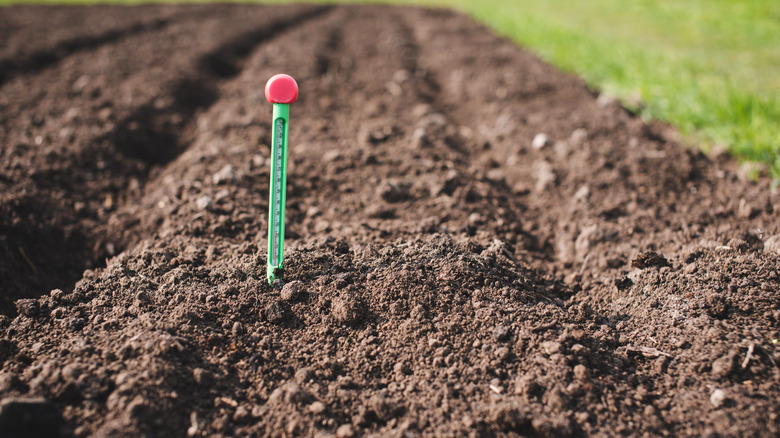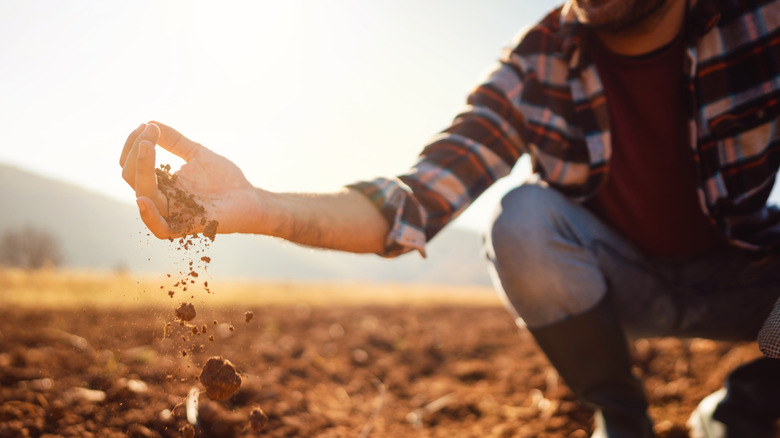Why You Can Skip Sterilizing Your Garden's Soil
If you're thinking about sterilizing your garden's soil, you might want to reconsider. The reasons have to do with the soil's contents, some of which provide most everything your plants needs to thrive. Moreover, sterilization methods are time-consuming and might yield mixed results. For example, some gardeners try placing the soil in the microwave, while others bake it in the oven to try to kill germs, fungus, and insect eggs or gnats.
Both of these methods may take a while since you can only fit so much soil in a microwave-safe container or in a baking pan for the oven. So you can imagine how long either of these methods take if you're going to sterilize the soil from a sizable garden in your backyard. Not only that, you're using a lot of electricity just for one task that's not guaranteed to be effective. Considering how troublesome this process can be, let's dive deeper into why you should avoid this practice and what you can do to ward off some issues that may affect your garden's health.
Reasons to not sterilize the soil
Sterilizing the soil can potentially harm the plants more than it can help. The soil loses both the good and the bad bacteria while also eliminating the ground's nutritional value. Once those substances and organisms are gone, you have to make an extra effort to revamp the soil. Often, this may involve more artificial means — like chemical fertilizers — to replenish the nutritional content. Instead, you can opt for composting and using a natural fertilizer. Or better yet, you can simply use what's already contained in the soil, which means refraining from sterilization. This saves you time and money while allowing your plants to gain their proper nutrition from their natural environment.
Another reason for not sterilizing your soil relates to maintaining a friendly habitat for bugs that offer protection for your plants, such as ladybugs and praying mantises. These insects help keep aphids, gnats, and the other bad bugs at bay–if you try your best to keep them around. If a bug issue does develop in the future, you can always rely on homemade insect repellents or store-bought organic sprays.
Using sunlight for natural sterilization
As an alternative to artificially sterilizing the soil, consider relying on sunlight to get the job done. You can choose from a couple of simple procedures, depending on how much soil you need to sterilize.
For planters that you'll place in the yard or a flower bed, you can put the soil in clear plastic bags and leave them outside completely exposed to sunlight on a warm day. The plastic bag, when heated, acts like a small oven raising the temperature of the soil. If you prefer a sturdier container, a clear plastic bucket works — as long as you have a clear cover over it to facilitate an increase in temperature.
If you have a broader area to sterilize, like a plot in the yard, you can take a clear plastic sheet — like the coverings used when painting — and spread it over the spot where you plan on planting. You can also dig up the soil from the plot and place it in between two plastic sheets. One tip to try is placing the bottom sheet on a surface that's bound to warm up on a hot day, pouring the soil over it, and then covering it with the top sheet. Another variation is to place the soil on a nylon tarp and cover that with a plastic sheet. Either way, the hot temperatures will clear out bacteria and fungi.

